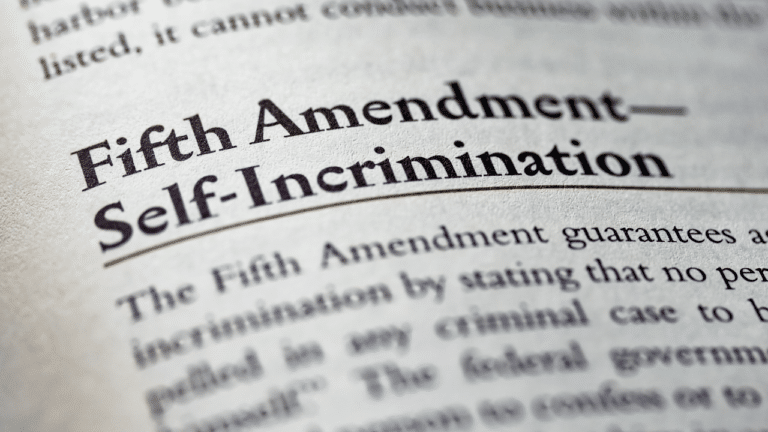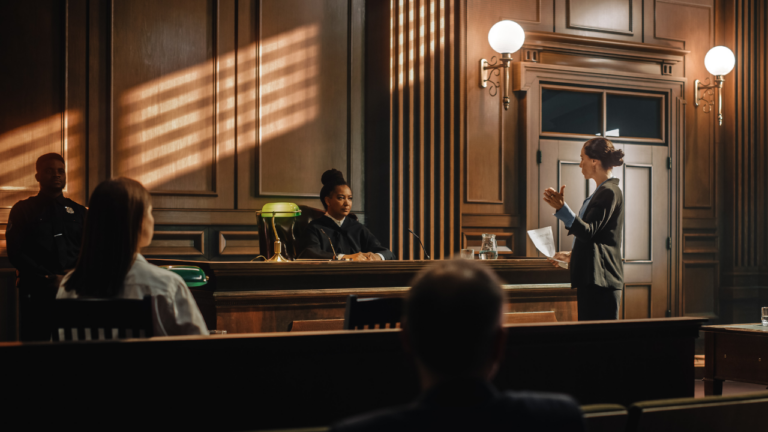The Twenty-Fifth Amendment officially establishes that the vice president assumes the presidency should the president be removed from office in the event of resignation or death. It also outlines the process in which the president may transfer his powers and duties should he be unable to perform them.
WHAT IS THE TEXT TO THE TWENTY-FIFTH AMENDMENT TO THE CONSTITUTION?
U.S. CONST. AMEND. XXV. PRESIDENTIAL AND VICE PRESIDENTIAL VACANCY
Section 1 In case of the removal of the President from office or of his death or resignation, the Vice President shall become President.
Section 2 Whenever there is a vacancy in the office of the Vice President, the President shall nominate a Vice President who shall take office upon confirmation by a majority vote of both Houses of Congress.
Section 3 Whenever the President transmits to the President pro tempore of the Senate and the Speaker of the House of Representatives his written declaration that he is unable to discharge the powers and duties of his office, and until he transmits to them a written declaration to the contrary, such powers and duties shall be discharged by the Vice President as Acting President.
Section 4 Whenever the Vice President and a majority of either the principal officers of the executive departments or of such other body as Congress may by law provide, transmit to the President pro tempore of the Senate and the Speaker of the House of Representatives their written declaration that the President is unable to discharge the powers and duties of his office, the Vice President shall immediately assume the powers and duties of the office as Acting President.
Thereafter, when the President transmits to the President pro tempore of the Senate and the Speaker of the House of Representatives his written declaration that no inability exists, he shall resume the powers and duties of his office unless the Vice President and a majority of either the principal officers of the executive department or of such other body as Congress may by law provide, transmit within four days to the President pro tempore of the Senate and the Speaker of the House of Representatives their written declaration that the President is unable to discharge the powers and duties of his office. Thereupon Congress shall decide the issue, assembling within forty-eight hours for that purpose if not in session. If the Congress, within twenty-one days after receipt of the latter written declaration, or, if Congress is not in session, within twenty-one days after Congress is required to assemble, determines by two-thirds vote of both Houses that the President is unable to discharge the powers and duties of his office, the Vice President shall continue to discharge the same as Acting President; otherwise, the President shall resume the powers and duties of his office.
WHAT IS THE HISTORICAL ORIGIN OF THE TWENTY-FIFTH AMENDMENT?
When the Founding Fathers wrote the Constitution, they did not specify the line of succession for the two highest political offices in the land. It was just assumed that when the president resigned or died, the vice president was to take their place. The only mention in the document was that Congress determines “what officer shall then act as president”. However, it did not take into consideration what would happen if the vice president was removed from their position, or if the president was temporarily incapacitated. Furthermore, the Constitution did not note who had the authority to declare that the president was unable to serve, or was able to return to office. This has led to confusion over the years.
PRESIDENTIAL SUCCESSION ACT
The earliest attempt at establishing the line of succession was in 1792, when Congress passed the Presidential Succession Act. It determined that the president pro tempore and the speaker of the House, respectively, to be next in line should both the offices of the president and vice president become vacant. However, this changed in 1886, when the position of the president pro tempore raised some concerns, which led to Congress revising the Presidential Succession Act. The new version eliminated both the House speaker and president pro tempore from the line of presidential succession. In their place was the secretary of state and other cabinet members.
This version of the Presidential Succession Act lasted until 1947, when it was revised again. President Harry Truman—who was recently sworn into office after President Franklin Delano Roosevelt’s death—was concerned that his secretary of state had never run for office and didn’t feel it was right for someone to become president with no election experience. Truman then proposed the return of the president pro tempore and House speaker to the line of succession—but with a twist, with the speaker of the House ahead of the president pro tempore.
JFK’S ASSASSINATION
Prior to the Twenty-Fifth Amendment, the Office of the Vice President was vacant 16 times due to death, resignation, or the vice president ascending to the presidency. The first instance was in 1841, when President William Henry Harrison died only a month into his presidency. He was succeeded by John Tyler, but no vice president was nominated to replace him in return. In some cases, the office of the vice president sat vacant for many years. For example, when Truman became president after Roosevelt’s death, the country had no vice president for four years.
During the early years of the Cold War, Congress started to consider adding an amendment to the Constitution to settle the succession question once and for all. However, it was not until the 1963 assassination of President John F. Kennedy that finally spurred them to action. Amidst the chaos, early news reports gave the false impression that Vice President Lyndon B. Johnson (who was in the motorcade with Kennedy) was also wounded, thus creating a fear of losing both the president and vice president in one day.
Although Johnson was not injured, his poor health, and the advanced ages of both the House speaker and president pro tempore, compelled Congress to continue drafting the amendment. Two years after Kennedy’s assassination, Congress passed the Twenty-Fifth Amendment, which was then ratified by the states in 1967.
WHO IS THE DESIGNATED SURVIVOR?
The designated survivor was a concept also conceived at the start of the Cold War. Officials were concerned that a Russian nuclear attack on Washington, D.C. could very well eliminate everyone on the line of succession at once, thus collapsing the entire United States government. Therefore, whenever there are occasions that require all top federal officials to be in the same place (e.g. the State of the Union), one member—usually part of the president’s cabinet—is selected to not be present. Instead, they are sequestered in an undisclosed location with Secret Service agents and the “football”, the briefcase carrying the country’s nuclear launch codes. In the event of a national catastrophe which leads to the deaths of every person in the line of succession, the designated survivor is to become president.
WHAT DOES THE TWENTY-FIFTH AMENDMENT DO?
The Twenty-Fifth Amendment clearly outlines the protocol if the Office of the President and/or Vice President becomes vacant due to resignation, death, or incapacitation. Previous administrations encountered confusion and uncertainty when the president was suddenly removed from office. In several cases when the vice president assumed the presidency, the country did not have a vice president, sometimes for many years. During the 1950s, Cold War concerns prompted Congress to consider amending the Constitution, but the assassination of Kennedy in 1963 provided the impetus for them to act.
HOW MANY TIMES HAS THE TWENTY-FIFTH AMENDMENT BEEN INVOKED?
To date, the Twenty-Fifth Amendment has been invoked seven times, for various reasons. Most have invoked Section 3, when the president was temporarily incapacitated. Section 4 has never been invoked.
- In 1973, Section 2 was invoked when Vice President Spiro Agnew resigned from office and was replaced by Gerald Ford.
- In 1974, Section 1 was invoked when President Nixon resigned.
- Consequently, Section 2 was invoked when the newly-minted President Ford nominated Nelson Rockefeller as his vice president.
- In 1985, President Ronald Reagan invoked Section 3 when he temporarily transferred power to Vice President George H.W. Bush before undergoing colon surgery.
- Similarly, in 2002 and 2007 President George W. Bush invoked Section 3 when he had a colonoscopy.
- In 2021, President Joseph Biden invoked Section 3 when he too, had a colonoscopy. Vice President Kamala Harris was the first female acting president, at roughly one hour and 25 minutes.
TWENTY-FIFTH AMENDMENT
The Twenty-Fifth Amendment ended the confusion regarding a president or vice president that is removed from office, whether temporarily or permanently. It also halts the awkward situation of a vacant vice presidential seat. And finally, it determines that Congress is responsible for ascertaining whether or not a president is fit to serve their duties.
TWENTY-FIFTH AMENDMENT COURT CASES
Because the Twenty-Fifth Amendment specifically involves the office of the president and vice president, to date there have been no court cases that directly refer to it.














